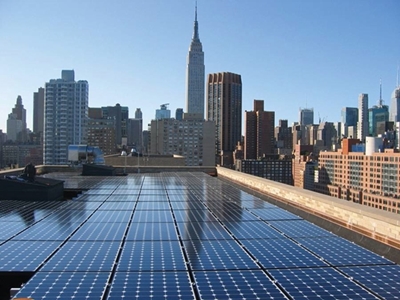Michael B. Gerrard
Andrew Sabin Professor of Professional Practice
Director, Center for Climate Change Law
The midterm elections on November 2 yielded significant results at the state level.
As readers of this blog are aware, California voters faced a ballot measure called Proposition 23, which would have frozen implementation of the nation’s most important state climate law, California’s A.B. 32. The campaigns for and against this measure attracted serious money on both sides. The proposition went down in flames, with a final tally of 61% opposed and 39% in favor. Another threat to A.B. 32 arose in the governor’s race. Republican candidate Meg Whitman said she would delay implementation, but she was defeated, 54% to 41%, by Democratic candidate Jerry Brown, who is full speed ahead on A.B. 32. Those results, coupled with Senator Barbara Boxer’s defeat of Carly Fiorina, made California the one bright spot last week for supporters of climate regulation.
Now that we know that A.B. 32 will be implemented, we also have a much better idea of what that will involve. On October 29 the staff of the California Air Resources Board released draft regulations for the cap-and-trade program to implement A.B. 32. There is now a public comment period on the draft regulations, and the final set will be adopted by the CARB board in mid-December. The first compliance period will run from 2012 through 2015. It will apply to in-state electricity generators, imported electricity, refineries, and large industrial sources. In 2015, it will be extended to fuel distributors. The draft regulations, unlike a discussion draft that CARB had circulated earlier, would provide free allocation for almost all major emitters, with a system that creates incentives within industries to reduce emissions by rewarding those with a carbon intensity below the industry average. The draft rule allows use of offsets. The cap will decline by 2% annually through 2014, and by 3% annually between 2015 and 2020. The statute set the final objective as returning greenhouse emissions to 1990 levels by 2020. That’s far less ambitious than the Kyoto Protocol, which would have U.S. emissions be 7% below 1990 levels by 2012. But for now and the foreseeable future, California’s cap-and-trade program will join the Regional Greenhouse Gas Initiative (RGGI) as the most important ones in the United States. It’s also something of a lifeline for the U.S. carbon trading industry, which is withering in view of the failure of federal legislation. One indication of the hard times for this industry is that the Chicago Climate Exchange just announced it’s going out of the voluntary carbon trading business.
However, there is a cloud hanging over California’s program. That’s Proposition 26, which received 53% of the votes. The California constitution already requires a two-thirds vote of the state legislature before taxes may be increased; Proposition 26 extends the two-thirds vote requirement to fees, which it defines broadly. Thus the question arises whether some elements of A.B. 32 implementation will be deemed to be fees that require a two-thirds vote. Some call Proposition 26 a sneak attack on A.B. 32 and other environmental programs. Others say it doesn’t apply at all, because A.B. 32 was passed in 2006, and Proposition 26 isn’t retroactive. All this is clearly one or more lawsuits in the making.
Not all the state action has been in California. A fight is brewing in New Mexico. On election day, the New Mexico Environmental Improvement Board voted 4-3 to adopt a cap-and-trade program in concert with the Western Climate Initiative. But the same day the voters elected Republican Susana Martinez as governor; she opposes cap-and-trade.
Maine voters elected a new Republican Governor, Paul LePage, who is reported to be a climate skeptic. That raises questions about Maine’s future role in RGGI.
Republicans also won governors offices previously held by Democrats in Pennsylvania, Ohio, Michigan, Wisconsin, Iowa, Tennessee, Kansas, Oklahoma and Wyoming. We don’t know exactly what that will mean for those states’ climate policies. But we do know that last year Republican governors took over from Democrats in New Jersey and Virginia, and both states have seen a definite ramping down of their climate change programs.
It was no surprise, but Texas voters re-elected Republican Governor Rick Perry. Texas has now set itself up as a staunch opponent of EPA regulation, and has launched a barrage of lawsuits challenging these regulations. Texas is also refusing to cooperate with EPA’s efforts to launch the PSD program.
Pro-climate regulation Democrats came out ahead in some other hotly contested governors races. Deval Patrick won a tight race in Massachusetts. Denver mayor John Hickenlooper was elected governor of Colorado.
There were also two other ballot propositions worth mentioning here. Georgia voters approved a constitutional amendment authorizing multiyear state contracts for energy efficiency and conservation projects. Voters in Washington State rejected a referendum that would authorize bonds to finance energy-efficiency projects in public schools and higher-education buildings.
Another area of contention is the races for state attorney general. The AGs offices are switching from Democratic to Republican hands in Arizona, Kansas, Ohio, Oklahoma and Georgia. The race in California is still too close to call. We may see some of these attorneys general start to push back against environmental regulations.
The final thing I’d like to mention at the state level is the dismissal of two state environmental commissioners who had been popular with environmental organizations. Outgoing New York governor David Paterson fired Commissioner Pete Grannis, purportedly because of the leak of a memo that described how budget cutbacks would cripple the state agency’s ability to carry out its missions. Outgoing Kansas Governor Mark Parkinson fired state health and environment secretary Rod Bremby for continuing his opposition to a major coal-fired power plant from Sunflower Electric. Both of these governors were Democrats who had been lieutenant governors and ascended when their respective bosses, Eliot Spitzer and Kathleen Sebelius, moved on under profoundly different circumstances.
Associate Director and Fellow, Center for Climate Change Law


